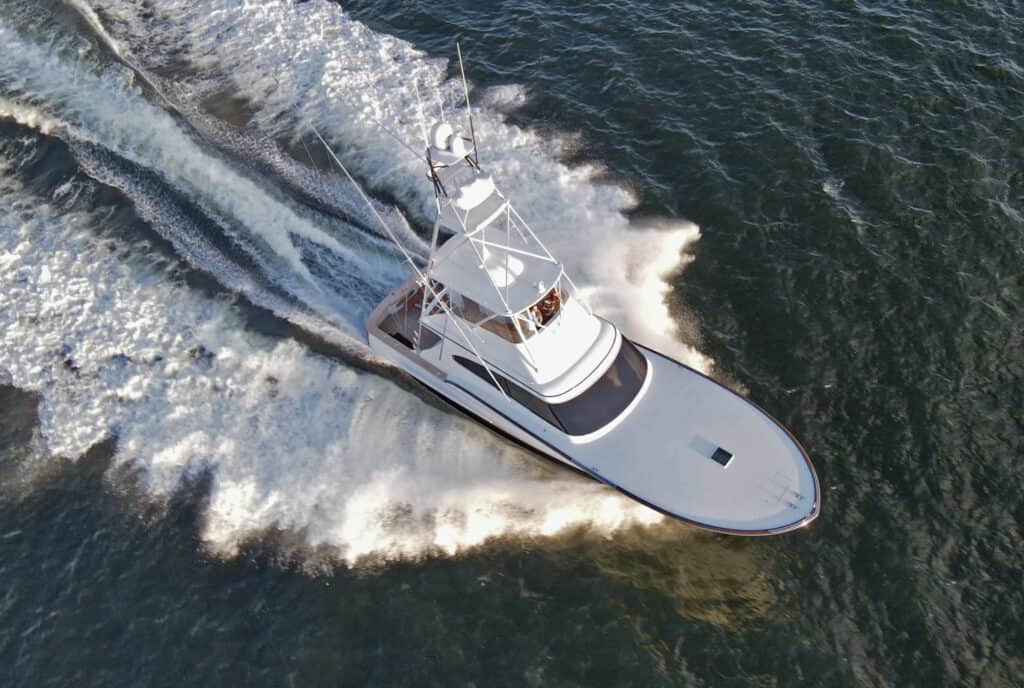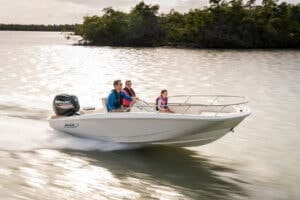Buying a boat can be an exciting, but often expensive, decision. And as with most financial decisions, you’ll want to do some research and calculating ahead of time. This can help ensure that your purchase is as affordable and cost-effective as possible.
Depending on the type of boat you want to buy, chances are high that you’ll need (and want) the help of a boat loan to finalize your purchase. If you’re ready to start the boat buying process, see how we do boat loans at Trident Funding.
Here’s a look at how boat loans work and what they entail, so you can get the boat you want and possibly even save a little money in the process.
What is a boat loan?
A boat loan is an installment product that is utilized to purchase a new or used boat of some kind, or refinance a loan on an existing boat. Boat loans are available through a variety of banks, credit unions, and marine lenders, each with their own process and stipulations.
Depending on the lender, you can use a boat loan to buy a canoe, a yacht, or almost anything in between. Once approved, your boat lender will purchase the boat on your behalf, allowing you to enjoy the boat while paying off the purchase slowly.
Like other types of installment loans (such as home mortgages or auto loans), boat loans are repaid with manageable monthly installments over a predetermined period of time. The boat serves as collateral to secure the loan, while the lender remains the lienholder until the boat is completely paid off.
Once the final payment is made on your boat loan, the lien will be released and your boat’s title will be sent to you. Then, you’ll own the boat free and clear!
How a boat loan works
So, you understand the general gist of how boat loans work. But what can you actually expect from the process?
Here are the steps you’ll take when choosing and borrowing a boat loan, and how to decide which boat loan is right for you.
Settle on a loan amount
Before you even start shopping around for a boat loan, you’ll need to determine how much you can — or rather, should — borrow in the first place.
Many factors go into calculating this number, too. It’s a combination of:
- What sort of boat you want (and how much it costs)
- What you can afford in terms of a monthly payment
- How much your lender allows (their loan limits)
- What you qualify for
- How much you can afford to put down on your purchase
For instance, if you can only afford a monthly payment of $850, buying a $3 million yacht probably isn’t in the budget. And if you are looking to purchase an $800,000 boat, a lender that only offers loans up to $500,000 isn’t going to be right for you.
You’ll also be limited by how much the lender allows you to borrow. At Trident Funding, for example, boat loans can range from as low as $25,000 all the way up to $2,000,000.
Shop around a bit, narrow down your list of potential boats, and decide on a reasonable loan range. Then you can begin shopping around for lenders.
Get pre-approved
Many lenders today offer loan pre-approval and/or pre-qualification. This will give you an idea of the loan limits and terms you’d qualify for without affecting your credit score. You can use a loan pre-approval to compare lenders and find the best possible rates, as well as see which lenders will finance your specific boat.
Some lenders won’t offer loans on certain types of boats, such as liveaboards. Others might not finance used boats over a certain age, or only offer loans up to a specific limit. Getting pre-approved can help you sift out the lenders that will be right for your particular situation. While not all lenders offer pre-approval, it can be a useful tool to consider.
It’s important to note that pre-approval doesn’t mean that the lender is guaranteed to approve your loan. You’ll still need to formally apply and get approved before you can make your purchase with your new boat loan.
Pick your boat
Once you have an idea of your budget and how much you’ll be able to borrow with a loan, you can begin shopping for your boat.
Most boat buyers start their searches on websites like Boat Trader or YachtWorld first to find boats they want to purchase.
In some cases, you may already have a specific boat in mind. Other times, you might have a whittled-down list but still need to find the perfect boat. Use that loan pre-approval to guide you through the shopping process and help you eliminate boats that don’t meet your lender’s (or your budget’s) criteria.
Formally apply for your loan
You’ve browsed, you’ve shopped, and you’ve finally found the right boat for you. Now, it’s time to submit an application for your loan.
Your loan application will involve a hard credit check. This will result in a hard inquiry on your credit report, which can temporarily ding your score by a few points. However, this hard pull gives lenders a complete overview of your credit history and whether or not you actually qualify for the loan you’re requesting.
Submit any necessary documentation
Expect your lender to request certain personal information through the boat loan application process. You may need to provide them with a combination of your
- Proof of identity
- Proof of employment
- Personal information (such as your birthdate and Social Security number)
- Contact information (email, phone number, address, etc.)
Once the lender has had a chance to go over your information and determine whether you qualify, you’ll be approved or denied. If you receive a credit approval, you can go ahead and purchase your boat. If you’re denied, you may need to apply with other potential lenders or even consider alternate ways of funding your purchase.
Choose your loan term
Once approved, your lender will give you a chance to choose your loan term, or how long you want to take to repay your debt. At Trident, boat loan terms range from 10 to 20 years in length.
The shorter your loan term, the higher your monthly payment. A longer loan term will result in a smaller payment amount, but means you’ll be in debt longer and can cost you more in terms of interest charges.
Get your interest rate
After deciding to lend you money for your boat, your lender will offer you one or more interest rate options. With boat loans, these are generally fixed rates, which means that they will remain the same for the life of the loan, until you repaid the debt in full or refinance.
The interest on your loan will determine how much that loan costs you in the end so the lowest rate you can get, the better. Your rate is determined by a variety of factors, such as your:
- Credit score
- Loan amount
- Type of boat
- Loan term
You may find that choosing shorter loan terms can unlock lower interest rates, whereas a longer loan term might only qualify you for a higher rate. Be sure to weigh your priorities and budget accordingly!
Decide on your down payment
With a boat loan, you are expected cover a portion of the purchase upfront, called your down payment. You’ll then use your boat loan to satisfy the remaining balance.
Depending on your boat, purchase price, credit qualifications, and the lender you chose, you will likely be given an option of how much to put down on your boat. Typically, you’ll need to put between 10% and 20% down on the purchase.
Add a cosigner (if needed)
The lender will also want to know if you are adding a co-borrower to your loan. In some cases, this may be necessary, especially if you don’t qualify on your own.
If adding a co-borrower, you’ll need to also provide the lender with his or her personal information, such as their name, address, birthdate, SSN, and email address and/or phone number. They will also be required to sign the loan’s promissory note, and be held responsible for the repayment of that loan.
Make your down payment
After you’ve been approved and signed for your loan, you can go ahead and purchase your boat. If buying through a dealer, you’ll be required to make your down payment at that time, which can usually be done via check, cash, or wire transfer. If buying a boat privately, you will simply need to cover the difference out of pocket.
Get your loan funded
Once you’ve put down the required amount, the seller will request payment from your lender. If buying your boat through a dealer, they will work with the lender to coordinate a check or wire transfer for the loan amount. If working with a private seller, your lender will provide you with a check or wire the funds to the seller, minus your down payment amount.
Make payments as scheduled
So, your loan has been funded and the boat is officially yours. Congratulations! Now what?
Well, you’ll simply need to make payments on your boat loan as agreed. It may take your lender a few weeks to finalize the purchase with your seller and request your first payment. In some cases, your lender may even offer deferred payment options, which can give you a few weeks or months before a payment is due on your loan.
After that, your payments will remain the same each and every month until your loan is fully satisfied. You may want to automate these payments so you don’t accidentally miss one (which can result in late fees and ding your credit score!). Many lenders will allow you to also make additional payments on your loan, so you can pay off the debt sooner and for less interest.
What is a Boat Loan?: The Bottom Line
For many people, a loan is a necessary step toward boat ownership. Boat loans allow you to spread your purchase out over a period of years, so that you can afford your boat now and/or keep funds liquid while enjoying the boat of your dreams. Boat loans are available to qualified borrowers looking to purchase a new or used boat, or even refinance an existing boat loan. If you’re interested in applying for a boat loan and seeing what sort of loan options are available to you, let us help!





